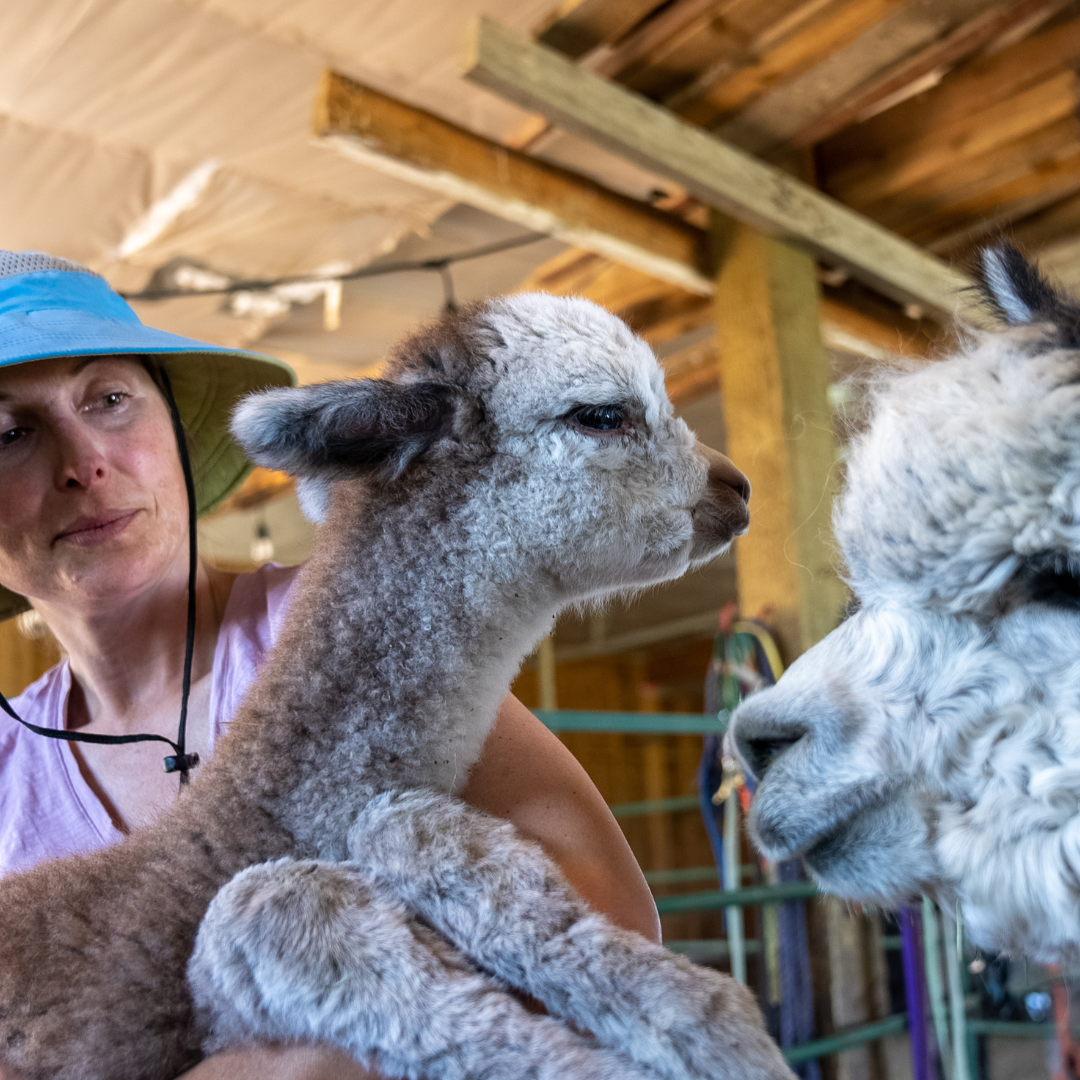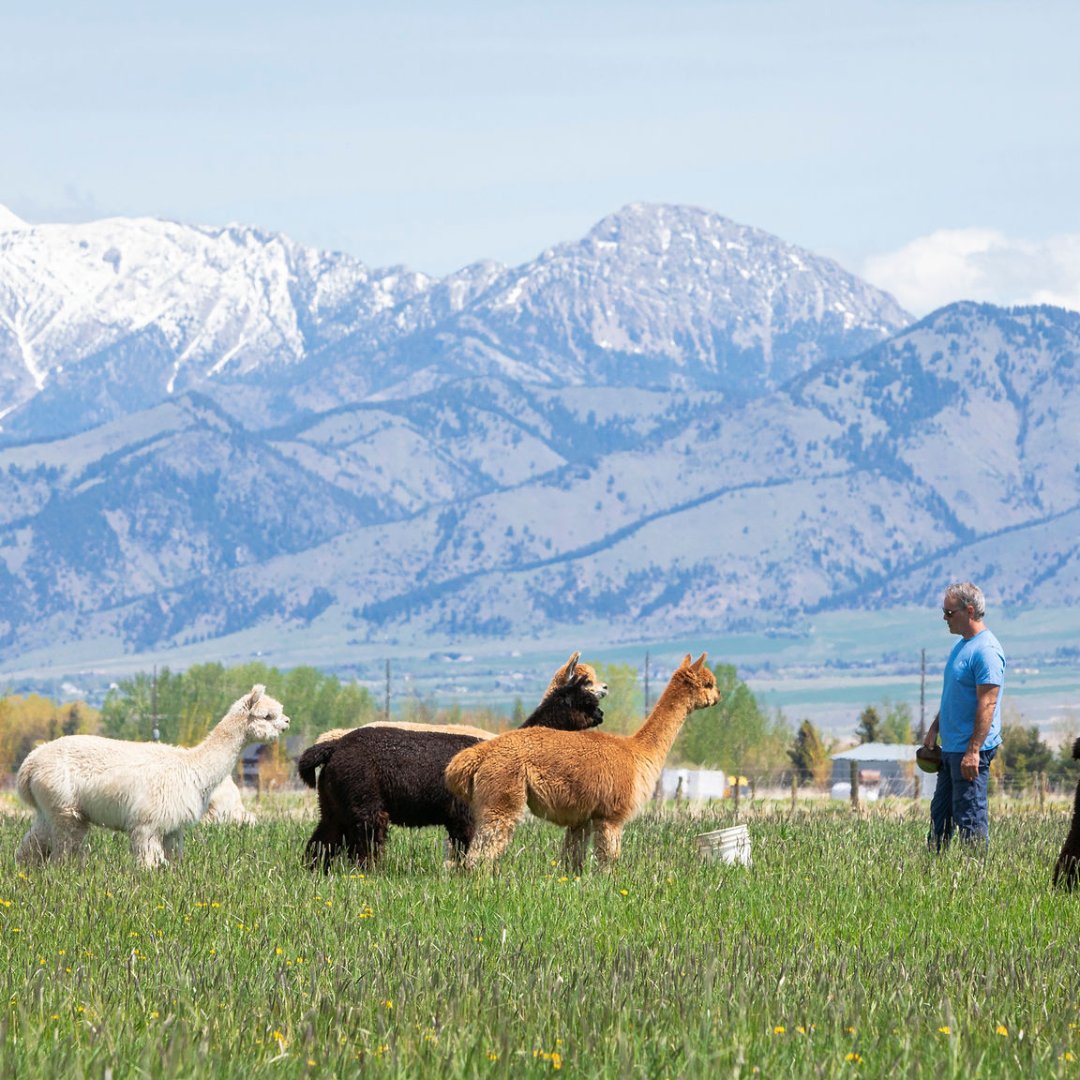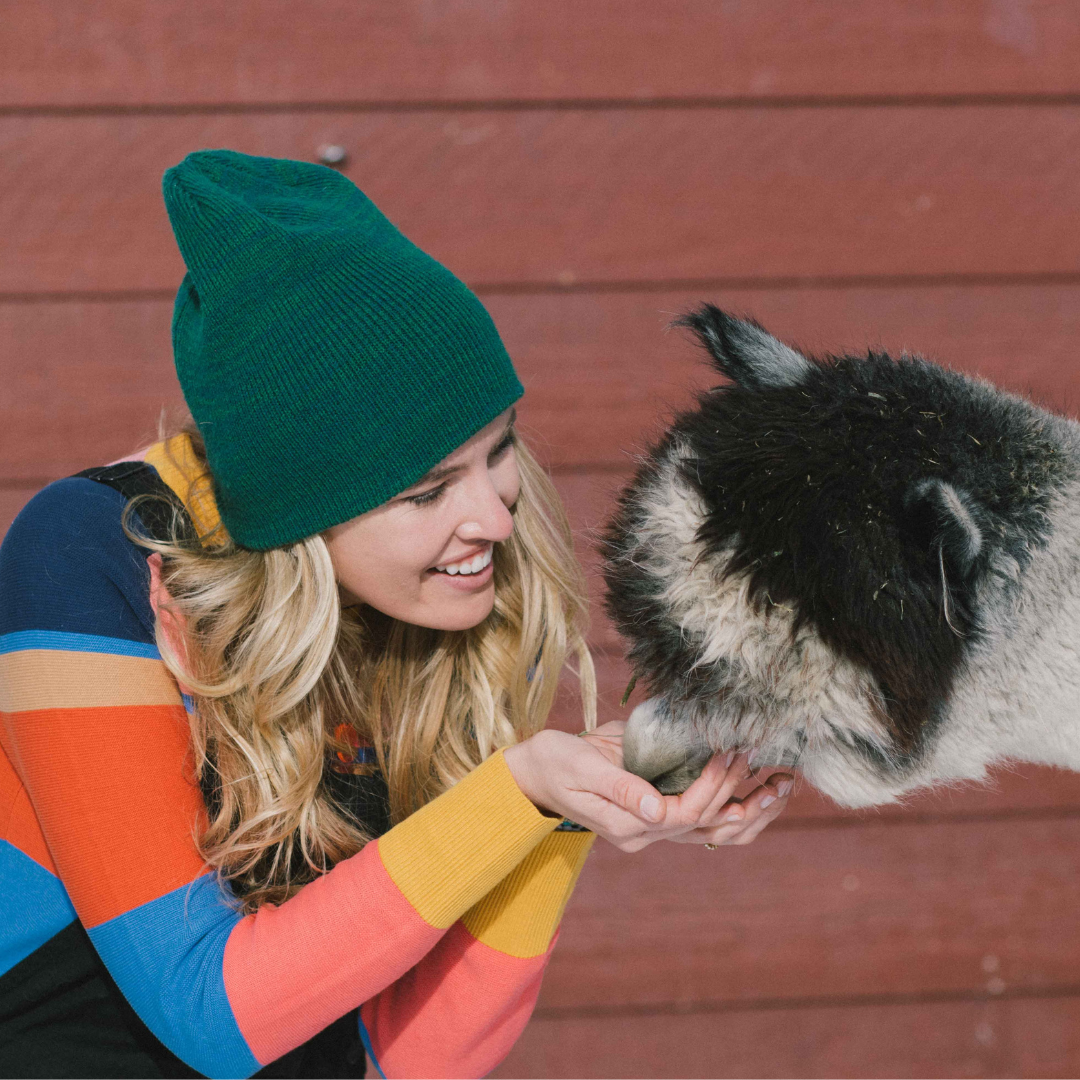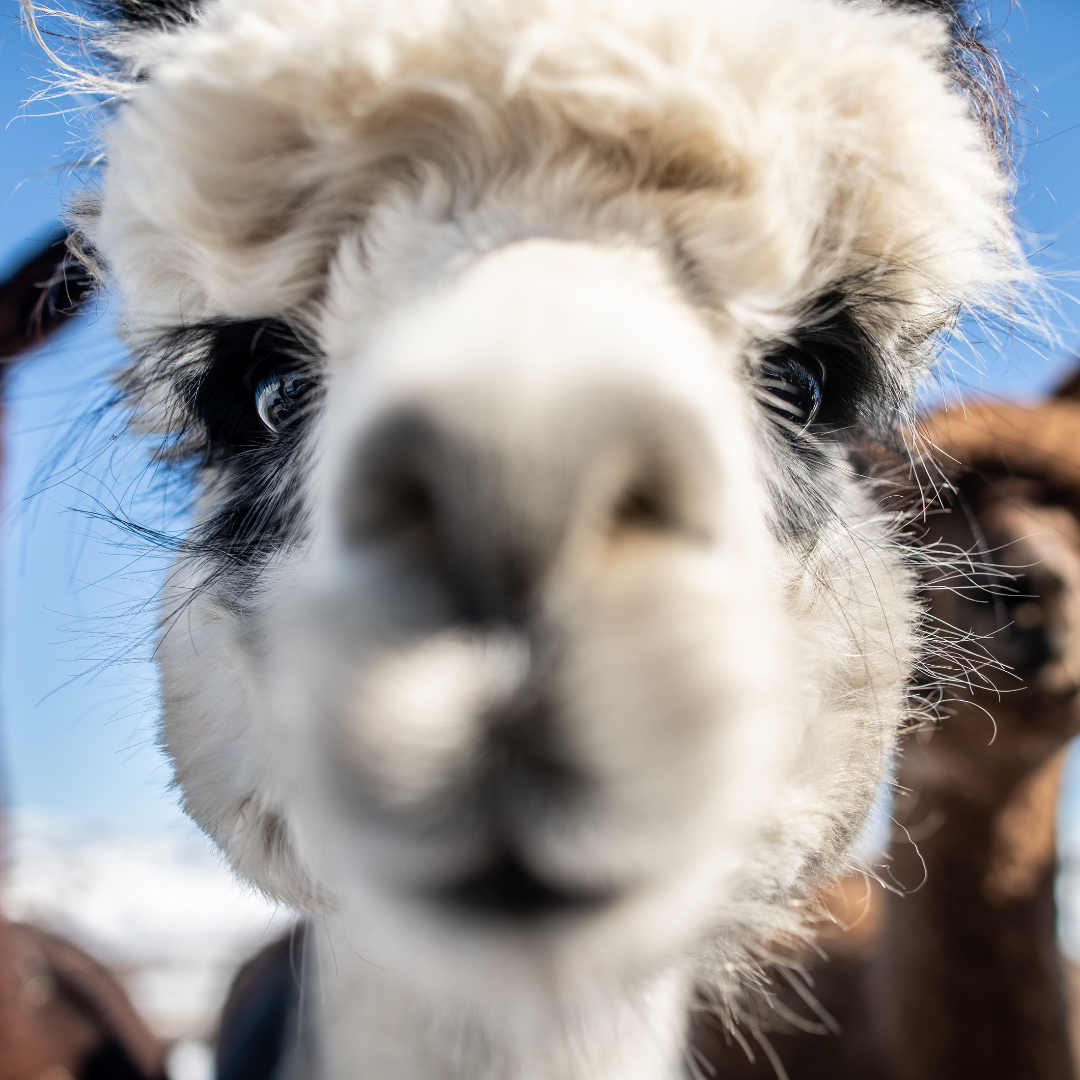For the last 6 six years, Alpacas of Montana has been teaming up with Montana State University’s Veterinary Program. A while back the university approached Alpacas of Montana asking if we could teach and inform the school’s veterinary students about camelids in general, including alpacas, llamas, guanacos and vicunas. We then set up a hands-on experience at the farm that students would attend. Every fall Alpacas of Montana’s veterinarian and a batch of students come to the farm after one of their class lectures to learn about all things camelids. We start off the experience with about an hour long talk from Co-Owner James Budd that focuses on the history of camelids and the origin of the alpaca--few people realize that alpacas are the second newest mammal to earth and that they are manmade. After the talk and looking at alpaca skeletons that have endured things like tooth abscesses, the students go out to the barn with Owners Sarah and James. Here, our veterinarian leads the students through basic exams of the alpacas. Students learn how to catch an alpaca, how to handle them and what their normal vitals look and sound like.


Veterinary students working on alpacas really have their work cut out for them, as they aren’t often studied in the veterinary community. Any drug that a veterinarian would need to give an alpaca is off label since there are no alpaca specific drugs. This makes it crucial for veterinarians who run into a camelid in the workplace to have the confidence to admit they may not know the answers. Veterinarians need to be comfortable seeking out and asking for help from colleagues who have worked on camelids.

Typically alpacas aren’t that hard to take care of as they really only need food, water and safety. The complicated comes in providing safety for the animals, since they cannot protect themselves. Alpacas were not made to live in the wild--they were bred specifically for their fiber. Because of this, our farm has fences, shelters, llamas and dogs protecting our alpaca herd.

Some common issues that alpacas endure and vets should watch out for are nutritional issues, intestinal parasites and tooth abscesses. Alpacas aren’t like horses, cows, dogs or chickens, and they communicate in unique ways that aren’t common in other typical farm animals. Because of this, alpaca owners and veterinarians need to learn how to and be comfortable communicating with these animals differently than they would other animals. Alpacas live their lives thinking that they’re going to get eaten--they are very much so flight animals that will not fight. Socializing and handling your alpacas makes it so much easier for veterinarians to effectively treat them when it’s necessary.




Join the alpaca revolution! Alpaca is a sustainable alternative that is not only good for the earth, but for all of us. Alpaca wool is stronger, softer, more eco-friendly, and offers 85% greater wicking capability than merino wool. It is also hypoallergenic! Learn more about the benefits of alpaca in our Alpaca vs. Wool blog posts, shop our collections and follow us on social media!


























































































